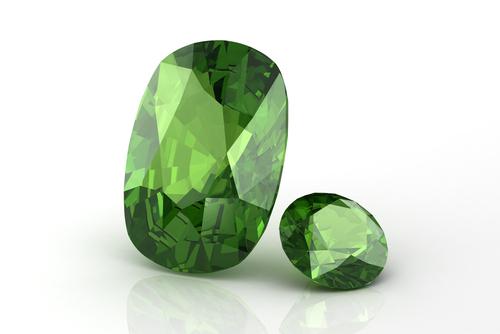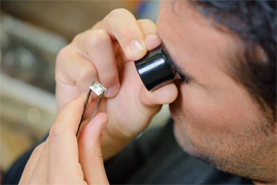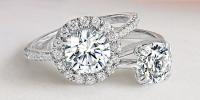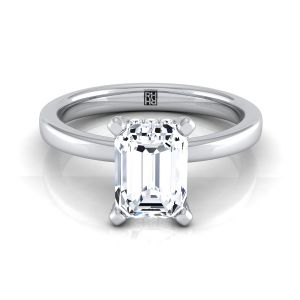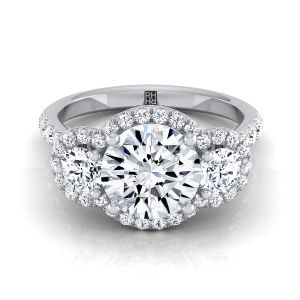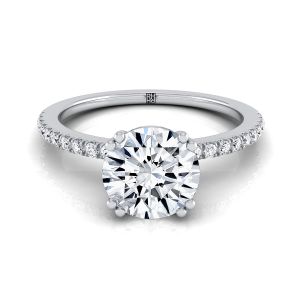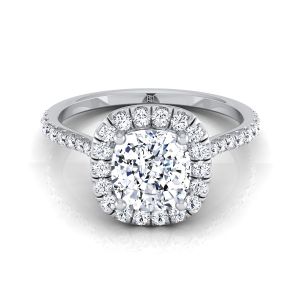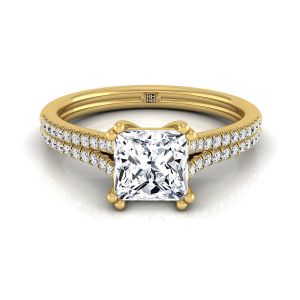
Chrysoprase is a
gem that is comprised of a form of chalcedony, carrying a green color due to the small amounts of nickel. A cryptocrystalline mineral – a
stone whose crystals are too small to see normally – chrysoprase makes up the cryptocrystalline family along with onyx, agate, carnelian, and other stones.
Chrysoprase’s green color is similar to that of a green
emerald diamond ring, although the latter is a result of the chromium inclusion instead of the presence of nickel. The harness of chrysoprase falls between 6 and 7 on the Mohs’ scale. The
stone is seen to be translucent in some cases, allowing light to shine through it.

A use for Chrysoprase was found in the early Greek, Roman, and Egyptian eras as a component of seals and
jewelry. Even Alexander the Great is claimed to have had a girdle carrying a lucky
stone to help in winning battles. The story goes that once when he was taking a bath in the Euphrates, a snake bit a portion of the
stone and destroyed it, and that the famed general did not win any battles after this incident.
The sensuous green color of chrysoprase was one of the reasons it has frequently been used in making jewelry during the Art Nouveau period, when it was almost as highly valued as jewelry
diamonds.
 Chrysoprase is a gem that is comprised of a form of chalcedony, carrying a green color due to the small amounts of nickel. A cryptocrystalline mineral – a stone whose crystals are too small to see normally – chrysoprase makes up the cryptocrystalline family along with onyx, agate, carnelian, and other stones.
Chrysoprase’s green color is similar to that of a green emerald diamond ring, although the latter is a result of the chromium inclusion instead of the presence of nickel. The harness of chrysoprase falls between 6 and 7 on the Mohs’ scale. The stone is seen to be translucent in some cases, allowing light to shine through it.
Chrysoprase is a gem that is comprised of a form of chalcedony, carrying a green color due to the small amounts of nickel. A cryptocrystalline mineral – a stone whose crystals are too small to see normally – chrysoprase makes up the cryptocrystalline family along with onyx, agate, carnelian, and other stones.
Chrysoprase’s green color is similar to that of a green emerald diamond ring, although the latter is a result of the chromium inclusion instead of the presence of nickel. The harness of chrysoprase falls between 6 and 7 on the Mohs’ scale. The stone is seen to be translucent in some cases, allowing light to shine through it.
 A use for Chrysoprase was found in the early Greek, Roman, and Egyptian eras as a component of seals and jewelry. Even Alexander the Great is claimed to have had a girdle carrying a lucky stone to help in winning battles. The story goes that once when he was taking a bath in the Euphrates, a snake bit a portion of the stone and destroyed it, and that the famed general did not win any battles after this incident.
The sensuous green color of chrysoprase was one of the reasons it has frequently been used in making jewelry during the Art Nouveau period, when it was almost as highly valued as jewelry diamonds.
A use for Chrysoprase was found in the early Greek, Roman, and Egyptian eras as a component of seals and jewelry. Even Alexander the Great is claimed to have had a girdle carrying a lucky stone to help in winning battles. The story goes that once when he was taking a bath in the Euphrates, a snake bit a portion of the stone and destroyed it, and that the famed general did not win any battles after this incident.
The sensuous green color of chrysoprase was one of the reasons it has frequently been used in making jewelry during the Art Nouveau period, when it was almost as highly valued as jewelry diamonds.









